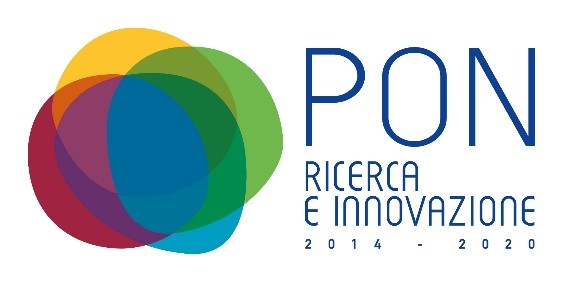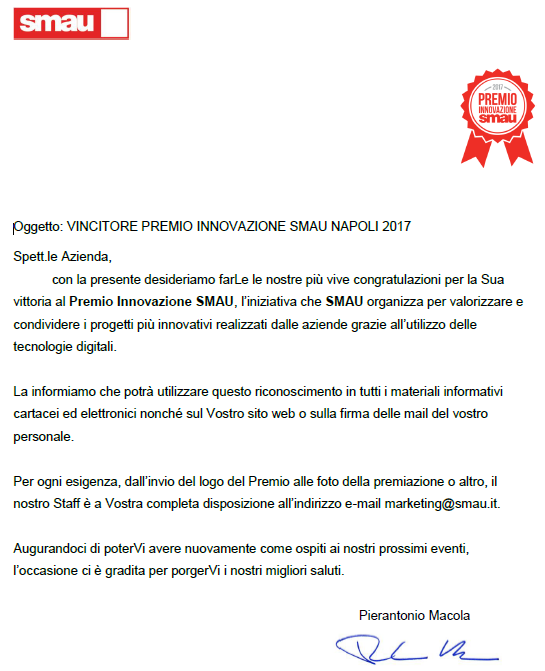 |
 |
 |
|---|---|---|
EMA carried the research project financed by MIUR (Italian Ministry of Research), code PON03PE_00111_1 “MATEMI – Materials and process technologies at high efficiency for Innovative Investment Castings”, together with the following project partners:
Università degli Studi di Napoli Federico II – Dip. DII e DIETI
Università degli studi di Salerno, Dip. DII
Università degli studi del Sannio, dip. DII
CRdC Tecnologie Scarl
Mosaico Monitoraggio Integrato s.r.l.
Tecnologica s.r.l.
PROMETE Srl
In addition to research (RI) and development (SS), a fully funded training project (FO) has also been implemented.
Start date 10-10-2013
End date 31-12-2018
Total cost of the entire project, as per decree prot. 782 of 6 March, 2014.
RI € 4.859.761,58
SS € 4.373.355,41
FO € 783.672,00
Only for EMA:
Cost for EMA for R&D activities (code CUP: B48F12000650005) € 6.397.437,50
Cost for EMA for training activities (CUP: B46D12000490007) € 783.672,00
Total grant for R&D activities € 3.335.068,75
Total grant for training activities € 783.672,00
Purpose of the project and main results achieved
Project PON03PE_00111_1 MATEMI – “Materials and process technologies at high efficiency for Innovative Investment Castings” has enabled the development of scientific and technological knowledge of excellence for the Investment Castings and has had the aim of improving production processes and developing new services for EMA.
The application solutions adopted are not only the scientific and technological heritage of the partners, but can also be used in contiguous industrial and technological areas (power generation, mechanical industries, plastic and molding sector, technical ceramic with high added value, biomedical, and other sectors that use technologies equivalents).
Wax molding
EMA has experimented the technological solutions developed by scientific partners (development of wax blends, mold optimization through the use of numerical modeling, creation of prototype molds via DMLS), thus assessing the applicability in the foundry of what has been developed by scientific partners. EMA also studied the qualitative and quantitative impacts of the various processes on the wax blades, developing and adopting new processing methods.
Ceramic cores and shells, process control and their behavior in the foundry
EMA has developed significant study and experimental analysis on core forming processes, on the process control (mainly control of the slurries) and on the behavior of ceramic products in the thermal cycles of the foundry. It has adopted both experiments directly in the shop floor and numerical modeling of the behavior of ceramic materials. A useful guideline was therefore obtained for the design of the ceramic material/process, which now enables EMA to better design the optimal compositions for cores and shells and the thermal processes.
In addition, one of the most significant goals of the entire research was the development of patent 102016000124073 for the integrated system for the automatic correction of the viscosity of a ceramic mixture.
Blades with higher castability
The importance of the assembly configurations for obtaining blades with high metallurgical and dimensional efficiency has been confirmed, even if the solidification process has a decisive influence, where (as in the case of a monocrystalline structure casting study) the ability to modulate the withdrawal is decisive for a good cast.
Development of post-cast processes, finishing and use of the laser in foundry processes
R&D activities focused on the optimization of heat treatments, important for the final metallurgical structure of the component; chemical attacks important for the inspection phase; on the finishing phase and lastly on the laser cladding end welding.
With regard to heat treatments, an alternative system has been studied to the alumina bars on which the blades are placed to avoid contamination: plates of ceramic material of the shells. Solubilization tests were carried out on small aeronautical blades poured with CMSX-6 alloy.
With regard to chemical treatments, the optimal parameters were identified to obtain high metallurgical characteristics and better surface inspection of the grains on Marm200 + Hf alloy.
The finishing activities led to the change of the belts for the removal of the material and the introduction of ad-hoc process monitoring systems.
The application of the laser for cladding and welding has led to the following results: the laser welding of the C20123 is feasible, while the CM247LC alloy has not been weldable.
Project PON03PE_00111_1 – F-MATEMI – Training project
The training project, carried out by EMA, had the aim of training two professional profiles, industrial researchers with specific skills in the sector of technological processes and innovative materials for engines having both general knowledge and a strong specific orientation on products. The course was followed in full by 7 students, all regularly hired by EMA at the end of the training course
Exploitation and dissemination activities
During the carrying out of the project activities, seminars, presentations and scientific articles were realized. In this way we’ve carried out the dissemination and exploitation activity in a proper and effective way.
In particular, the RITAM network has always participated to the “SMAU” in Naples since its first edition, with the presence of its own stand which, in recent years, has been allocated within the institutional spaces of the Campania Region.
In 2017 EMA also won the SMAU Innovation award

conferences or seminars (C / S) and publication (P) of articles in international journals is provided below.
P 2019: “Support Vector Representation Machine for superalloy investment casting optimization” C. Del Vecchio, G. Fenu, F. A. Pellegrino, M. Di Foggia, M. Quatrale, L. Benincasa, S. Iannuzzi, A. Acernese, P. Correra, L. Glielmo, Applied Mathematical Modelling 72 (2019) 324–336
P 2019: “3D temperature mapping of a ceramic shell mould in investment casting process via infrared thermography”, C. S. Greco, G. Paolillo, M. Contino, C. Caramiello, M. Di Foggia, G. Cardone, Quantitative InfraRed Thermography Journal, https://doi.org/10.1080/17686733.2019.1608083, 2019
C/S 2017: Speaker on “Numerical modeling and experimental characterization of fused silica-based ceramics during investment casting processes’ university of Trento, CERMODEL 2017 – SESSION 5 – Trento, 27th of July 2017;
C/S 2016: Speaker on “technology challenges and needs in the investment casting foundry: some case studies’ university of Burgos (sp), Industrial workshop and standardization innovation towards technology for extreme conditions industry Burgos, 5th-7th of October 2016
C/S 2016: Speaker on “development and implementatio of dies by SLM technique”, workshop on “additive laser manufacturing of metallic materials”, II edition, Università degli Studi di Salerno, 29 Settembre 2016.
C/S 2016: Speaker on “development and implementatio of dies by SLM technique”, master in additive manufacturing, I edizione, Roma 23-27 maggio 2016 organized by RINA
P 2016: “3D temperature map reconstruction of a ceramic shell mold in investment casting process”, https://www.ndt.net/search/docs.php3?showForm=off&id=20659, C.S. Greco, G. Paolillo, C. Caramiello, M. Di Foggia and G. Cardone
P 2016: “Technical feasibility of laser dissimilar welding of superalloys on casted nozzle guide vanes”, Procedia CIRP 41 (2016) pagg. 963-968, 48th CIRP Conference on MANUFACTURING SYSTEMS – CIRP CMS 2015, F. Caiazzoa,*, V. Alfieria, V. Sergia, Andrea Tartagliab, M. Di Foggiab, A. Niolab

Youtube Channel